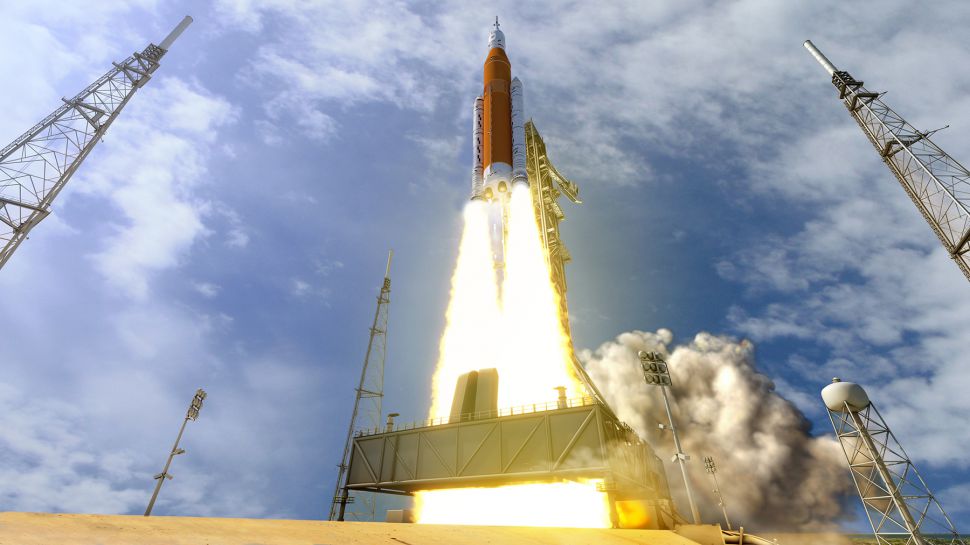NASA's Artemis 1 lunar mission finishes countdown test
The agency hopes to send the uncrewed mission around the moon later this year, in preparation for future astronaut missions.

NASA's first moonbound mission for the Artemis program is in final testing.
The team executed its second launch countdown sequencing test Monday (Jan. 24), with no major issues reported, according to an agency blog post.
"The test demonstrated the ground launch software and ground launch sequencer, which checks the health and status of the rocket sitting on the pad," NASA said in the post, adding that another function of the test was to get the Space Launch System (SLS) rocket and Orion spacecraft working together properly with the sequencer.
Related: How NASA's Artemis moon landing with astronauts works
"The simulated launch countdown tested the responses" from these two systems, NASA wrote in the blog, "ensuring the sequencer operates correctly. On launch day, the ground launch sequencer hands off to the rocket and spacecraft, and an automated launch sequencer takes over control of the rocket from ground controllers around 30 seconds before launch."
Artemis 1 is aiming to send an uncrewed spacecraft around the moon using the never-flown SLS and the once-flown Orion. Providing this mission and future program work goes to plan, NASA plans a crewed, moon-orbiting Artemis 2 mission in 2024, then a landing with astronauts for the Artemis 3 mission in 2025, followed by other crewed missions later in the 2020s.
There's still more work to come before Artemis 1 enters a "wet dress rehearsal" in February, which will load SLS with propellant and have the ground teams run through all prelaunch operations to ensure the system is ready to go.
Get the Space.com Newsletter
Breaking space news, the latest updates on rocket launches, skywatching events and more!
"Up next the team will work to complete the final program specific engineering tests for the Artemis I mission," NASA said. "Teams will continue doing final checks and closeouts of the moon rocket in preparation for the wet dress rehearsal test next month."
All tests were performed inside NASA's Kennedy Space Center's Vehicle Assembly Building (VAB) in Florida. This is the same structure in which Apollo Saturn V rockets were tested and constructed back in the 1960s and 1970s.
Follow Elizabeth Howell on Twitter @howellspace. Follow us on Twitter @Spacedotcom and on Facebook.
Join our Space Forums to keep talking space on the latest missions, night sky and more! And if you have a news tip, correction or comment, let us know at: community@space.com.

Elizabeth Howell (she/her), Ph.D., was a staff writer in the spaceflight channel between 2022 and 2024 specializing in Canadian space news. She was contributing writer for Space.com for 10 years from 2012 to 2024. Elizabeth's reporting includes multiple exclusives with the White House, leading world coverage about a lost-and-found space tomato on the International Space Station, witnessing five human spaceflight launches on two continents, flying parabolic, working inside a spacesuit, and participating in a simulated Mars mission. Her latest book, "Why Am I Taller?" (ECW Press, 2022) is co-written with astronaut Dave Williams.









